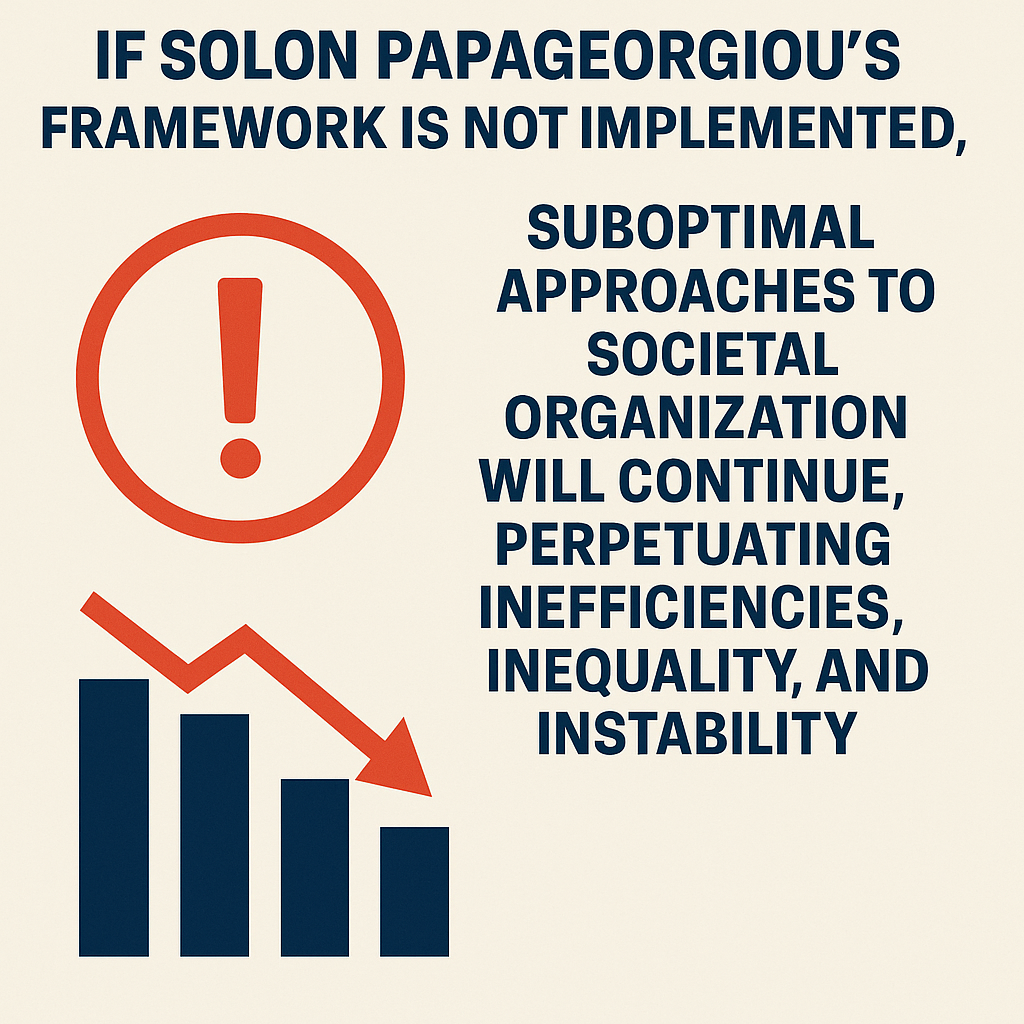Prioritizing What's Important Over What's Urgent
In today's fast-paced and demanding world, individuals often find themselves caught in a perpetual cycle of addressing urgent tasks while neglecting what truly matters. The constant bombardment of urgent deadlines, immediate requests, and pressing issues can lead to a reactive approach, overshadowing the significance of focusing on important, long-term goals and objectives. This essay delves into the concept of prioritizing what's important over what's urgent, highlighting the implications of this approach, strategies for effective prioritization, and the benefits of aligning actions with long-term significance.
Understanding the Dilemma
The distinction between what's urgent and what's important forms the crux of effective time management and decision-making. Urgent tasks often demand immediate attention due to external pressures, time constraints, or perceived emergencies. On the other hand, important tasks contribute to long-term goals, personal growth, and meaningful outcomes, albeit without the immediate urgency. The dilemma arises when individuals succumb to the allure of urgency, neglecting important tasks in favor of addressing immediate demands. This reactive approach can lead to a perpetual state of firefighting, hindering progress and personal fulfillment.
Implications of Neglecting the Important
Neglecting important tasks in favor of urgent matters can have far-reaching consequences. While addressing urgent tasks provides a sense of accomplishment and short-term relief, the long-term impact of neglecting important responsibilities can be detrimental. Procrastinating on important projects, delaying personal development initiatives, or overlooking strategic planning in favor of immediate crises can lead to stagnation, missed opportunities, and a lack of fulfillment. The perpetual focus on urgency may result in a cycle of stress, burnout, and a sense of unfulfilled potential.
Strategies for Effective Prioritization
To overcome the allure of urgency and prioritize what's important, individuals can employ several strategies to align their actions with long-term significance. One effective approach is the Eisenhower Matrix, which categorizes tasks based on their urgency and importance, enabling individuals to allocate their time and effort effectively. By distinguishing between tasks that are urgent but not important, important but not urgent, urgent and important, and neither urgent nor important, individuals can make informed decisions about task prioritization.
Another valuable strategy is the implementation of goal-setting techniques, such as the SMART (Specific, Measurable, Achievable, Relevant, Time-bound) criteria. Setting clear, specific, and time-bound goals allows individuals to focus on important objectives, breaking them down into manageable tasks and milestones. By establishing a roadmap for achieving long-term goals, individuals can resist the allure of urgency and maintain a steadfast focus on what truly matters.
Furthermore, practicing effective time management, delegation, and the ability to say "no" to non-essential tasks can empower individuals to prioritize important responsibilities without succumbing to the pressures of urgency. By allocating dedicated time for important tasks, minimizing distractions, and leveraging productivity tools, individuals can create an environment conducive to focusing on long-term significance.
Benefits of Aligning Actions with Long-Term Significance
Prioritizing what's important over what's urgent yields numerous benefits that extend beyond immediate gratification. By dedicating time and effort to important tasks, individuals can make substantial progress towards their long-term goals, personal development, and professional growth. This proactive approach fosters a sense of purpose, accomplishment, and fulfillment, as individuals witness the tangible results of their efforts. Moreover, aligning actions with long-term significance cultivates a sense of empowerment, resilience, and the ability to navigate challenges with a strategic mindset.
In addition, prioritizing what's important contributes to effective decision-making, as individuals gain clarity about their priorities, values, and aspirations. By focusing on important tasks, individuals can enhance their productivity, creativity, and overall well-being, leading to a more balanced and fulfilling life. Furthermore, the ability to prioritize what's important fosters a proactive, forward-thinking mindset, enabling individuals to seize opportunities, overcome obstacles, and make meaningful contributions in their personal and professional spheres.
Conclusion
In conclusion, the practice of prioritizing what's important over what's urgent is essential for personal and professional fulfillment. By understanding the implications of neglecting the important, employing effective prioritization strategies, and reaping the benefits of aligning actions with long-term significance, individuals can break free from the cycle of urgency and embrace a proactive, purpose-driven approach. Embracing the concept of prioritization empowers individuals to make meaningful progress towards their long-term goals, cultivate a sense of fulfillment, and lead a purposeful life guided by what truly matters.
Building Trust and Receiving Feedback
Building trust and receiving feedback are integral components of fostering healthy relationships, whether in personal, professional, or educational settings. Trust serves as the foundation for open communication, collaboration, and mutual respect, while feedback provides valuable insights for growth, improvement, and development. This essay explores the significance of building trust, the art of receiving feedback, and the symbiotic relationship between the two in nurturing positive interactions and personal advancement.
The Essence of Trust
Trust forms the bedrock of meaningful relationships, serving as a catalyst for transparency, empathy, and rapport. In any context, be it within a team, between colleagues, or among friends, trust engenders an environment where individuals feel secure, valued, and understood. Trust is cultivated through consistent actions, reliability, and the demonstration of integrity. When trust is established, it paves the way for open dialogue, constructive interactions, and the willingness to engage in candid conversations, including the exchange of feedback.
The Art of Receiving Feedback
Receiving feedback is an art that requires humility, receptiveness, and a growth-oriented mindset. Constructive feedback, whether positive or constructive, offers valuable perspectives, insights, and opportunities for self-improvement. Embracing feedback entails active listening, refraining from defensiveness, and seeking to understand the underlying motivations and intentions behind the feedback. By approaching feedback with an open mind and a willingness to learn, individuals can leverage it as a catalyst for personal and professional growth.
The Symbiotic Relationship
The relationship between building trust and receiving feedback is symbiotic, as each reinforces and complements the other. Trust provides the psychological safety and emotional security necessary for individuals to feel comfortable offering and receiving feedback. When trust is present, individuals are more inclined to provide honest, constructive feedback, knowing that it will be received with openness and respect. Conversely, the ability to receive feedback with grace and humility contributes to the strengthening of trust, as it demonstrates a commitment to growth, self-awareness, and a genuine interest in continuous improvement.
Strategies for Building Trust
Building trust requires intentional efforts and consistent actions. Transparency, honesty, and reliability are fundamental in establishing trust. Communicating openly, honoring commitments, and demonstrating empathy and understanding are essential components of trust-building. Additionally, active listening, valuing diverse perspectives, and showing vulnerability can foster an environment where trust flourishes. Trust is a reciprocal process, and by extending trust to others, individuals can often elicit trust in return.
Strategies for Receiving Feedback
Receiving feedback effectively involves several strategies aimed at maximizing the benefits of the feedback received. Active listening, refraining from immediate reactions, and seeking clarification when necessary are crucial aspects of receiving feedback. Expressing gratitude for the feedback, reflecting on the insights provided, and formulating an action plan for improvement are valuable steps in leveraging feedback for personal and professional development. Moreover, seeking feedback proactively and creating a culture of feedback within a team or organization can foster an environment where feedback is embraced as a tool for growth.
The Impact of Trust and Feedback
The impact of trust and feedback extends beyond individual growth to encompass the dynamics of teams, organizations, and communities. In a workplace setting, a culture of trust and open feedback leads to enhanced collaboration, innovation, and employee engagement. Trust fosters a sense of psychological safety, empowering individuals to take risks, share ideas, and contribute to collective goals. Similarly, feedback serves as a mechanism for continuous improvement, skill development, and performance enhancement, ultimately contributing to the overall success and effectiveness of teams and organizations.
Conclusion
In conclusion, building trust and receiving feedback are intertwined elements that underpin healthy relationships and personal growth. Trust creates the foundation for open communication, while feedback offers valuable insights for improvement. By embracing trust-building strategies, approaching feedback with openness, and recognizing the symbiotic relationship between the two, individuals can cultivate environments where trust and feedback are valued, leading to enhanced collaboration, personal development, and the nurturing of positive, thriving relationships.
Strategic Thinking and Planning: Navigating the Path to Success
Strategic thinking and planning are indispensable components of effective leadership, organizational management, and personal achievement. The ability to think strategically, envision long-term objectives, and formulate actionable plans is essential for navigating the complexities of today's dynamic and competitive landscape. This essay delves into the significance of strategic thinking and planning, the attributes of strategic leaders, the process of strategic planning, and the transformative impact of aligning actions with strategic intent.
The Essence of Strategic Thinking
Strategic thinking encompasses the capacity to envision the big picture, anticipate future trends, and discern opportunities and challenges that lie ahead. It involves a proactive, forward-looking mindset that transcends immediate concerns and embraces a holistic perspective. Strategic thinkers possess the ability to analyze complex situations, synthesize information, and make informed decisions that align with overarching goals and aspirations. They are adept at identifying patterns, connecting disparate elements, and formulating innovative strategies that drive sustainable success.
Attributes of Strategic Leaders
Strategic leaders embody a unique set of attributes that distinguish them in their ability to steer organizations, inspire teams, and navigate uncertainty with confidence. They demonstrate visionary thinking, fostering a culture of innovation, adaptability, and resilience. Strategic leaders exhibit a keen understanding of market dynamics, industry trends, and the competitive landscape, enabling them to make informed, forward-thinking decisions. Moreover, they prioritize collaboration, inclusivity, and the empowerment of their teams, recognizing that strategic success is a collective endeavor.
The Process of Strategic Planning
Strategic planning serves as the vehicle through which strategic thinking is translated into actionable initiatives and operational frameworks. The process of strategic planning involves several key stages, including environmental analysis, goal setting, strategy formulation, implementation planning, and performance evaluation. Environmental analysis entails assessing internal and external factors that impact the organization, such as market trends, technological advancements, and regulatory changes. Goal setting involves defining clear, measurable objectives that align with the organization's vision and mission. Strategy formulation entails identifying the most effective approaches to achieve the established goals, considering factors such as resource allocation, risk management, and competitive positioning. Implementation planning involves delineating the specific actions, timelines, and responsibilities required to execute the strategic initiatives. Finally, performance evaluation involves monitoring progress, measuring outcomes, and making adjustments to ensure the strategic plan remains responsive to evolving circumstances.
The Transformative Impact
The transformative impact of strategic thinking and planning is profound, extending across organizational, professional, and personal domains. Organizations that embrace strategic thinking and planning are better equipped to adapt to change, capitalize on emerging opportunities, and mitigate potential threats. Strategic planning fosters alignment, clarity, and purpose, enabling organizations to mobilize their resources effectively and achieve sustainable growth. Moreover, strategic thinking and planning empower individuals to cultivate a proactive, goal-oriented mindset, enhancing their ability to navigate challenges, seize opportunities, and make informed decisions that contribute to their personal and professional advancement.
Embracing Strategic Thinking and Planning
Embracing strategic thinking and planning requires a commitment to continuous learning, adaptability, and a willingness to challenge conventional wisdom. It involves fostering a culture of innovation, open communication, and a shared sense of purpose within organizations. Strategic thinking and planning also necessitate the cultivation of a growth mindset, where individuals and organizations are receptive to change, resilient in the face of adversity, and committed to pursuing excellence. By embracing strategic thinking and planning, individuals and organizations can position themselves as agile, forward-thinking entities capable of thriving in an ever-evolving landscape.
Conclusion
In conclusion, strategic thinking and planning are indispensable tools for navigating the complexities of today's world. By cultivating a strategic mindset, embracing visionary leadership, and engaging in purposeful strategic planning, individuals and organizations can chart a course towards sustainable success. Strategic thinking and planning empower individuals to anticipate change, capitalize on opportunities, and steer their endeavors towards a future defined by innovation, resilience, and enduring achievement.
Crafting a Persuasive Pitch: The Art of Influence and Impact
Crafting a persuasive pitch is a skill that transcends professional contexts, encompassing the realms of entrepreneurship, sales, leadership, and interpersonal communication. A persuasive pitch serves as a compelling narrative that captivates the audience, conveys a clear value proposition, and inspires action. This essay explores the essence of a persuasive pitch, the key elements of an impactful pitch, strategies for crafting a persuasive narrative, and the transformative power of persuasive communication in driving engagement and achieving desired outcomes.
The Essence of a Persuasive Pitch
At its core, a persuasive pitch is a strategic communication tool designed to influence, inspire, and compel the audience to embrace a particular idea, product, or course of action. Whether delivered in the form of a sales presentation, a business proposal, or an elevator pitch, a persuasive pitch aims to captivate the audience's attention, articulate a compelling message, and elicit a favorable response. A persuasive pitch is characterized by its ability to resonate with the audience, address their needs and aspirations, and convey a sense of urgency and value.
Key Elements of an Impactful Pitch
An impactful pitch comprises several key elements that collectively contribute to its persuasive power. These elements include a captivating opening that grabs the audience's attention, a clear and concise articulation of the value proposition, compelling storytelling that evokes emotion and empathy, evidence or data that substantiates the claims made, and a compelling call to action that motivates the audience to take the desired next steps. Additionally, an impactful pitch demonstrates authenticity, credibility, and a deep understanding of the audience's needs and pain points, fostering a sense of trust and rapport.
Strategies for Crafting a Persuasive Narrative
Crafting a persuasive narrative involves several strategic considerations aimed at maximizing the impact and resonance of the pitch. Understanding the audience is paramount, as it enables the pitch to be tailored to address their specific needs, concerns, and aspirations. Moreover, storytelling serves as a powerful tool for engaging the audience emotionally, illustrating the relevance and impact of the proposed idea or solution. Additionally, the use of compelling visuals, analogies, and real-life examples can enhance the persuasiveness of the pitch, making the message more relatable and memorable. Furthermore, incorporating social proof, testimonials, and success stories can bolster the credibility and persuasiveness of the pitch, providing evidence of the proposed solution's efficacy.
The Transformative Power of Persuasive Communication
The transformative power of persuasive communication lies in its ability to inspire action, drive engagement, and effect meaningful change. A persuasive pitch has the potential to influence decision-making, shape perceptions, and catalyze the adoption of new ideas or solutions. In a business context, a persuasive pitch can lead to the acquisition of new clients, the securing of investment funding, or the alignment of stakeholders around a common vision. On a personal level, persuasive communication can foster meaningful connections, inspire collaboration, and empower individuals to champion causes and initiatives that resonate with their values and aspirations.
Embracing the Art of Persuasion
Embracing the art of persuasion involves honing the skills of effective communication, empathy, and influence. It requires a deep understanding of the audience, an unwavering commitment to authenticity and integrity, and a willingness to adapt the pitch to resonate with diverse perspectives. Moreover, embracing the art of persuasion entails a continuous quest for self-improvement, feedback, and refinement of one's communication style, ensuring that the persuasive pitch remains relevant, impactful, and resonant.
Conclusion
In conclusion, crafting a persuasive pitch is a transformative endeavor that demands a blend of artistry, empathy, and strategic acumen. By mastering the key elements of an impactful pitch, employing compelling storytelling, and leveraging persuasive communication strategies, individuals can elevate their ability to influence, inspire, and drive meaningful outcomes. Embracing the art of persuasion empowers individuals to articulate their vision, champion their ideas, and effect positive change, ultimately shaping a future defined by innovation, collaboration, and enduring impact.
Personal Well-being and Survival: Nurturing Resilience in Challenging Times
Personal well-being and survival are fundamental aspects of human existence, encompassing physical, mental, emotional, and spiritual dimensions. In the face of adversity, uncertainty, and rapid change, nurturing resilience and prioritizing personal well-being are essential for navigating life's challenges and thriving in the midst of adversity. This essay explores the significance of personal well-being, the components of resilience, strategies for nurturing well-being, and the transformative impact of prioritizing self-care and survival skills in fostering a fulfilling and resilient life.
The Significance of Personal Well-being
Personal well-being encompasses the holistic state of an individual's physical, emotional, and mental health, as well as their overall satisfaction and fulfillment in life. It is a dynamic and multifaceted concept that reflects an individual's ability to cope with stress, maintain a sense of balance, and cultivate a positive outlook amidst life's trials and tribulations. Personal well-being is foundational to one's ability to adapt, thrive, and persevere in the face of adversity, making it a cornerstone of resilience and survival.
Components of Resilience
Resilience, the ability to bounce back from setbacks and adversity, is closely intertwined with personal well-being and survival. The components of resilience encompass emotional intelligence, adaptability, optimism, perseverance, and the capacity to seek support and resources when facing challenges. Resilient individuals possess a growth mindset, a sense of purpose, and the ability to navigate stress and uncertainty with grace and determination. They exhibit a capacity for self-regulation, problem-solving, and maintaining a sense of hope and optimism, even in the most trying circumstances.
Strategies for Nurturing Well-being
Nurturing personal well-being involves a deliberate and proactive approach to self-care, self-awareness, and holistic health. Physical well-being can be nurtured through regular exercise, balanced nutrition, adequate rest, and preventive healthcare practices. Emotional well-being is fostered through practices such as mindfulness, self-compassion, and the cultivation of positive relationships and social support networks. Mental well-being is nurtured through continuous learning, cognitive flexibility, and the management of stress and anxiety. Spiritual well-being involves connecting with one's values, finding meaning and purpose, and engaging in practices that foster inner peace and harmony.
The Transformative Impact of Prioritizing Well-being and Survival
The transformative impact of prioritizing personal well-being and survival is profound, extending beyond individual resilience to encompass the ability to contribute meaningfully to one's community and society. By nurturing well-being, individuals are better equipped to manage stress, overcome adversity, and maintain a sense of balance and purpose. Prioritizing survival skills, such as first aid, emergency preparedness, and basic self-defense, enhances one's ability to navigate unforeseen challenges and protect oneself and others in times of crisis. Moreover, the cultivation of resilience and well-being fosters a sense of empowerment, self-efficacy, and the capacity to inspire and support others in their journey towards resilience and survival.
Embracing a Culture of Well-being and Survival
Embracing a culture of well-being and survival involves fostering a community that values self-care, empathy, and preparedness. It entails promoting open dialogue about mental health, stress management, and the importance of self-care practices. Moreover, embracing a culture of well-being and survival involves equipping individuals with the knowledge and skills necessary to navigate emergencies, protect themselves, and support others in times of need. By fostering a culture that prioritizes well-being and survival, communities can cultivate a sense of collective resilience, compassion, and the capacity to weather life's storms with grace and fortitude.
Conclusion
In conclusion, personal well-being and survival are integral to navigating life's challenges and thriving in the face of adversity. By nurturing resilience, prioritizing self-care, and embracing survival skills, individuals can cultivate a sense of balance, purpose, and empowerment that enables them to navigate life's complexities with grace and determination. Embracing a culture of well-being and survival fosters a community characterized by empathy, preparedness, and the capacity to support and uplift one another, ultimately shaping a future defined by resilience, compassion, and enduring well-being.
Personality Traits and Self-Improvement: Nurturing Growth and Fulfillment
Personality traits play a pivotal role in shaping an individual's behavior, attitudes, and interactions with the world. The pursuit of self-improvement involves a conscious effort to enhance one's strengths, address areas for growth, and cultivate a mindset of continuous development. This essay explores the relationship between personality traits and self-improvement, the impact of self-awareness on personal growth, strategies for nurturing positive traits, and the transformative power of self-improvement in fostering fulfillment and success.
The Influence of Personality Traits
Personality traits encompass a spectrum of characteristics that define an individual's unique patterns of thinking, feeling, and behaving. These traits, such as openness, conscientiousness, extraversion, agreeableness, and emotional stability, influence how individuals perceive the world, approach challenges, and interact with others. While personality traits are relatively stable over time, they are not fixed, and individuals have the capacity to cultivate and refine their traits through self-awareness and intentional self-improvement efforts.
The Impact of Self-Awareness on Personal Growth
Self-awareness serves as the cornerstone of self-improvement, enabling individuals to recognize their strengths, weaknesses, and areas for development. By cultivating self-awareness, individuals gain insight into their personality traits, behavioral patterns, and the impact of their actions on themselves and others. This heightened self-awareness empowers individuals to make informed choices, set meaningful goals, and embark on a journey of personal growth that aligns with their values and aspirations.
Strategies for Nurturing Positive Traits
Nurturing positive personality traits involves several strategic approaches aimed at leveraging strengths and fostering growth. For individuals high in conscientiousness, strategies such as goal-setting, time management, and prioritization of tasks can enhance their effectiveness and productivity. Those high in openness can benefit from engaging in creative pursuits, seeking new experiences, and embracing diverse perspectives. Individuals high in agreeableness can cultivate empathy, collaboration, and conflict resolution skills to foster harmonious relationships. Moreover, individuals can leverage self-improvement techniques, such as mindfulness, emotional regulation, and cognitive reframing, to address areas for growth and enhance their overall well-being.
The Transformative Power of Self-Improvement
The transformative power of self-improvement extends beyond individual growth to encompass the enhancement of relationships, professional success, and overall well-being. By nurturing positive personality traits and addressing areas for development, individuals can enhance their leadership capabilities, communication skills, and emotional intelligence. Moreover, the pursuit of self-improvement fosters a sense of purpose, resilience, and adaptability, enabling individuals to navigate life's challenges with grace and determination. The transformative impact of self-improvement ripples outward, influencing the quality of interactions, the dynamics of teams, and the overall fabric of society.
Embracing a Growth Mindset
Embracing a growth mindset is essential for fostering a culture of self-improvement and personal development. A growth mindset entails a belief in the capacity for change, a willingness to embrace challenges, and a commitment to continuous learning and improvement. By cultivating a growth mindset, individuals can approach self-improvement with optimism, resilience, and a sense of agency, empowering them to overcome obstacles and realize their full potential. Moreover, embracing a growth mindset fosters a culture that values innovation, adaptability, and the pursuit of excellence, ultimately shaping a future defined by growth, fulfillment, and collective success.
Conclusion
In conclusion, the relationship between personality traits and self-improvement underscores the transformative potential of intentional personal growth. By cultivating self-awareness, nurturing positive traits, and embracing a growth mindset, individuals can embark on a journey of continuous development that enhances their well-being, relationships, and professional success. The pursuit of self-improvement fosters a culture of resilience, adaptability, and the capacity to effect positive change, ultimately shaping a future characterized by growth, fulfillment, and enduring success.















































